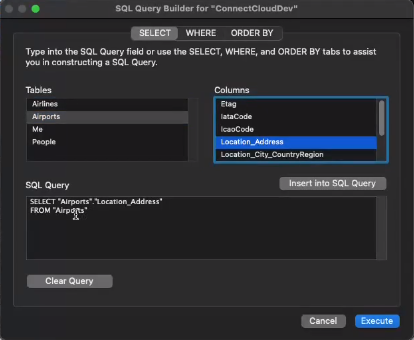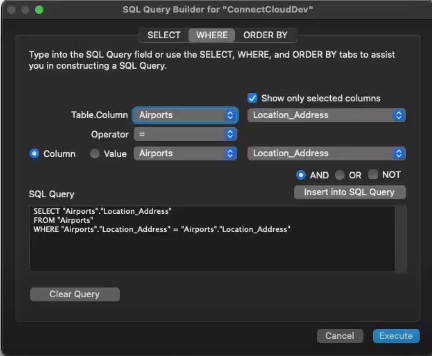Model Context Protocol (MCP) finally gives AI models a way to access the business data needed to make them really useful at work. CData MCP Servers have the depth and performance to make sure AI has access to all of the answers.
Try them now for free →Connect to Kintone Data from Filemaker Pro (Mac)
Use CData Connect Cloud to connect to and query live Kintone data from Filemaker Pro on Mac.
FileMaker Pro is a cross-platform relational database application that allows users to visually modify a database. When paired with CData Connect Cloud, FileMaker Pro gets access to live Kintone data. This article demonstrates how to connect to Kintone using Connect Cloud and query Kintone data in FileMaker Pro.
CData Connect Cloud provides a pure SQL Server interface for Kintone, allowing you to query data from Kintone without replicating the data to a natively supported database. Using optimized data processing out of the box, CData Connect Cloud pushes all supported SQL operations (filters, JOINs, etc.) directly to Kintone, leveraging server-side processing to return the requested Kintone data quickly.
Configure Kintone Connectivity for FileMaker Pro
Connectivity to Kintone from FileMaker Pro is made possible through CData Connect Cloud. To work with Kintone data from FileMaker Pro, we start by creating and configuring a Kintone connection.
- Log into Connect Cloud, click Connections and click Add Connection
- Select "Kintone" from the Add Connection panel
-
Enter the necessary authentication properties to connect to Kintone.
In addition to the authentication values, set the following parameters to connect to and retrieve data from Kintone:
- Url: The URL of your account.
- GuestSpaceId: Optional. Set this when using a guest space.
Authenticating with Kintone
Kintone supports the following authentication methods.
Using Password Authentication
You must set the following to authenticate:
- User: The username of your account.
- Password: The password of your account.
Using Basic Authentication
If the basic authentication security feature is set on the domain, supply the additional login credentials with BasicAuthUser and BasicAuthPassword. Basic authentication requires these credentials in addition to User and Password.
Using Client SSL
Instead of basic authentication, you can specify a client certificate to authenticate. Set SSLClientCert, SSLClientCertType, SSLClientCertSubject, and SSLClientCertPassword. Additionally, set User and Password to your login credentials.
![Configuring a connection (Salesforce is shown)]()
- Click Create & Test
-
Navigate to the Permissions tab in the Add Kintone Connection page and update the User-based permissions.
![Updating permissions]()


Add a Personal Access Token
If you are connecting from a service, application, platform, or framework that does not support OAuth authentication, you can create a Personal Access Token (PAT) to use for authentication. Best practices would dictate that you create a separate PAT for each service, to maintain granularity of access.
- Click on your username at the top right of the Connect Cloud app and click User Profile.
- On the User Profile page, scroll down to the Personal Access Tokens section and click Create PAT.
- Give your PAT a name and click Create.
- The personal access token is only visible at creation, so be sure to copy it and store it securely for future use.

Connect to Kintone from FileMaker Pro using Connect Cloud
To establish a connection from FileMaker Pro to the CData Connect Cloud Virtual SQL Server API, follow these steps.
Configure the ODBC Connection to CData Connect Cloud
- Download and install the Actual ODBC Driver for SQL Server (actualtech.com)
- Configure a DSN for the Actual ODBC driver by setting the following properties:
- URL: tds.cdata.com
- Port: Change the port from 1433 to 14333
- Username: Your Connect Cloud email address
- Password: the PAT you created earlier
Query Kintone from FileMaker Pro
- In the SQL Query Builder "SELECT" tab, select the columns to include as part of the query.
![Configuring the query by selecting columns.]()
- Open the "WHERE" tab of the SQL Query Builder and select "Show only selected columns."
- In "Table.Column,"" select a table and a column name.
- Set the "Operator" to =.
- Select "Column," and then select the same table and column name as "Table.Column."
- Click "Insert into SQL Query."
![Configuring the query by setting the WHERE clause.]()
- If no other modifications to the SQL query are required, click "Execute."
Get CData Connect Cloud
To get live data access to 100+ SaaS, Big Data, and NoSQL sources directly from your SQL Server database, try CData Connect Cloud today!





